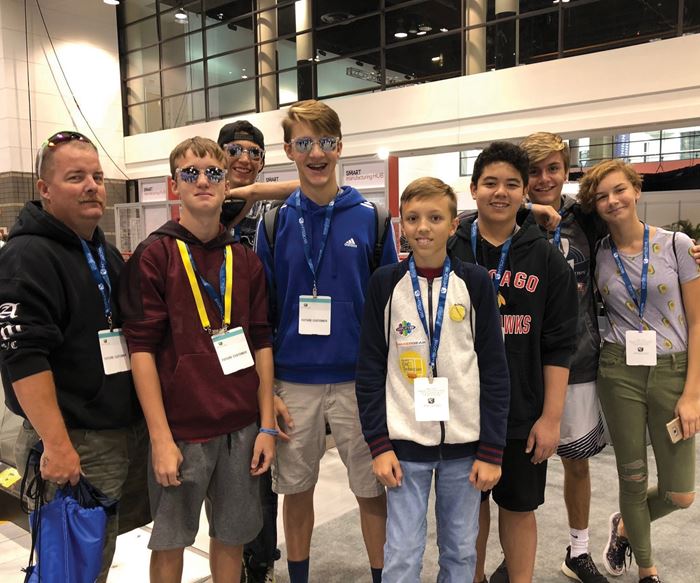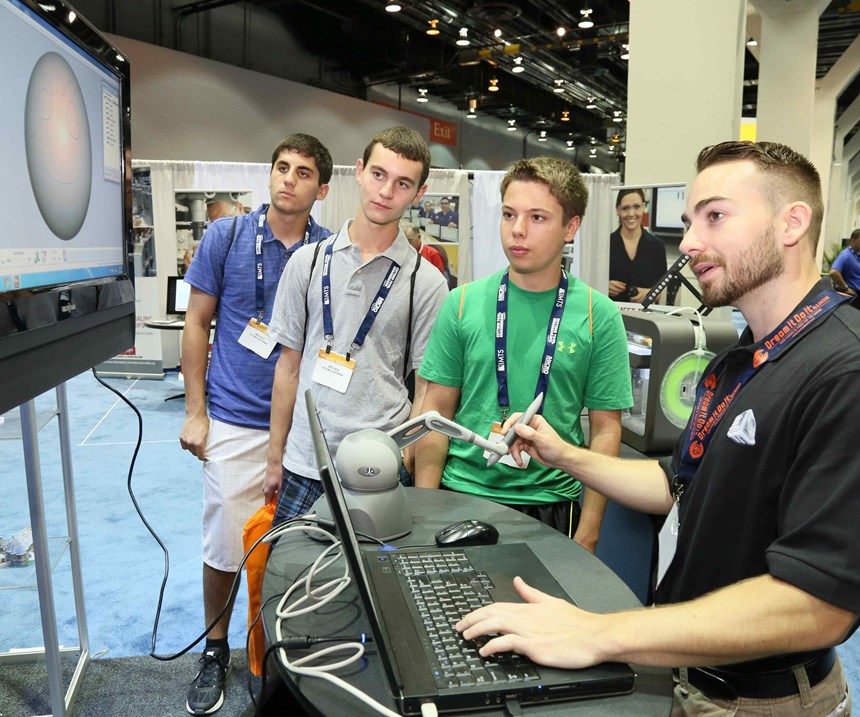Students Experience the Manufacturing Classroom of the Future
As the future of our manufacturing workforce, it’s important for students attending the Smartforce Student Summit to understand what technologies they will be working with once they enter the workforce.
Share




In an industry that is continuously changing and always becoming more sophisticated, it’s critical for STEM educators and students to stay abreast of the latest technology and processes. Although no one can precisely predict the future of manufacturing, new manufacturing trends and technologies are becoming commonplace and proving to be effective and efficient within manufacturing facilities around the globe, which helps manufacturers foresee what processes and technologies are here to stay, at least in the near future.
“Educators and students can engage in the industry’s vision of the manufacturing technology classroom of the future,” says Greg Jones, vice president of Smartforce development at AMT – The Association For Manufacturing Technology. “These manufacturing classrooms of the future are smart, transformational education models such as augmented reality/virtual reality (AR/VR) and project-based learning that are here today and will become more widely used in the classroom.”
Because these students are the future of our manufacturing workforce, it’s important for those attending the Smartforce Student Summit (North Building, Hall C) to understand what technologies they might be working with once they enter the workforce. In turn, it’s critical that educators of these STEM students understand what the manufacturing classroom of the future should look like to best prepare their students.
“We want to show the education market what our industry believes the manufacturing classroom of the future looks like,” Jones says. “We exhibit the STEM challenges and projects we think educators should have in their classroom if they have a program heading toward STEM education. Attendees see the kind of equipment that must be in a classroom.” Students and educators will experience the manufacturing classroom of the future throughout the Student Summit in the exhibitor booths, Jones says.
Also in the exhibitor booths are displays of different ways that students can engage in project-based learning. “STEM-related, project-based learning is part of our vision for the manufacturing technology classroom of the future,” Jones says.
Mastercam/CNC Software Inc., for example, is bringing the project-based Create-A-Skate, a project-based learning initiative that allows students to learn manufacturing processes by building skateboards. The hands-on Festo Didactic booth is launching its STEM Bionic Learning Network animals. It also has an AR/VR display of its vision of mechatronics for the manufacturing technology classroom.
“AR/VR will also become an important model for continuous life-learning as new innovations and technologies evolve and people are required to update their knowledge and skills,” Jones says. Additional AR/VR applications as educational tools are found in the Siemens, ABB Robotics and Phillips Corp. exhibits at the summit.



























.jpg;maxWidth=970;quality=90)